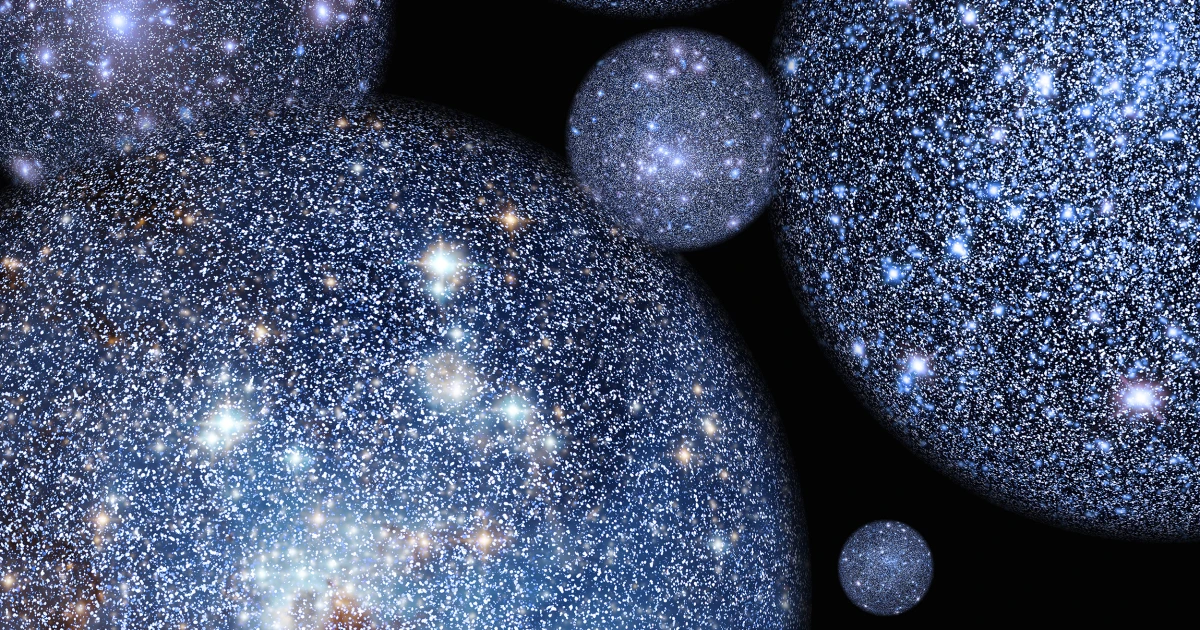Key Takeaways:
- Researchers suggest that remnants from previous universes may be visible in the cosmic microwave background (CMB).
- The theory of “conformal cyclic cosmology” proposes our universe undergoes repeated cycles of Big Bangs and compressions.
- These scientists believe “Hawking points” – spots in the CMB – might be remnants of ancient black holes from prior universes.
- The concept challenges the traditional view of a single Big Bang and aligns with the hypothesis of a “recycling” universe.
- Evidence supporting this theory remains limited, and more research is needed to confirm Hawking points and prior universe cycles.
________
Evidence of black hole remnants from previous universes may be hiding in the cosmic microwave background.

Recent research suggests that black holes from a prior universe might have left detectable imprints in our own universe’s cosmic microwave background (CMB). This concept is rooted in a fascinating theory called “conformal cyclic cosmology” (CCC), proposed by Sir Roger Penrose and his team. According to CCC, the universe could undergo endless cycles of expansions and compressions. While most traces of previous universes would disappear, certain residual signals—like the energy emitted from black holes—might survive and reappear in subsequent cycles.
The Hawking Points and Their Significance
The foundation of this hypothesis is based on theoretical spots in the CMB known as “Hawking points,” named after the physicist Stephen Hawking, who proposed that black holes emit faint radiation, now called Hawking radiation. Over vast timescales, black holes would evaporate completely, and CCC theorizes that the radiation from these evaporated black holes could leave behind circular imprints—Hawking points—on the CMB map.
Roger Penrose and his colleagues claim to have identified such points and suggest that these may offer indirect evidence of past universes. They propose that Hawking points could appear as bright circles in the CMB, with the radiation concentrated due to the vast compression following each universe’s “end.” By analyzing these circular regions on the CMB map, the researchers hope to trace cosmic events that occurred long before our current universe began, suggesting a cosmic recycling process.
Challenges to the Theory
The CCC theory stands in contrast to widely accepted models of the universe’s evolution. Most cosmologists support the view that the universe is continually expanding at an accelerated rate, making a future “Big Crunch” or re-collapse highly unlikely. This expansion model, known as cosmic inflation, has strong backing from observed data and does not require a cyclical universe. Additionally, there is currently no direct observational evidence for Hawking radiation, much less Hawking points, meaning that proving CCC remains challenging.
Penrose’s team notes that BICEP2, a research project dedicated to mapping the CMB, may have already identified at least one potential Hawking point. Although initially thought to be caused by interstellar dust or gravitational waves, these points might fit the predicted pattern described by CCC. However, it remains controversial; the CMB anomalies could have alternative explanations, and additional research is essential to verify or refute CCC’s claims.
Future Implications
The implications of CCC and Hawking points would reshape our understanding of cosmology if verified. It would imply a “recycling” universe model, where the end of one cosmic cycle sparks the beginning of another. Although speculative, CCC could deepen our understanding of black hole radiation and the origins of the universe itself.
Until more evidence is gathered, CCC remains an intriguing yet unproven theory, requiring substantial empirical validation before it can significantly challenge the prevailing single-universe Big Bang model. Nevertheless, it offers a fresh perspective on the potential longevity of the cosmos and the hidden imprints of universes past.





Attractive section of content I just stumbled upon your blog and in accession capital to assert that I get actually enjoyed account your blog posts Anyway I will be subscribing to your augment and even I achievement you access consistently fast
[…] Er worden kleine stappen gezet in de richting van onthulling. Wetenschappers beginnen bewijzen te vinden van vorige kosmische cycli: link […]
[…] on November 9, 2024 by Science & […]
[…] Scientists May Have Just Found Evidence For Previous Universes That Existed Before Our Own […]
[…] Scientists May Have Just Found Evidence For Previous Universes That Existed Before Our Own […]
[…] Origen: Scientists May Have Just Found Evidence For Previous Universes That Existed Before Our Own […]
[…] Scientists May Have Just Found Evidence For Previous Universes That Existed Before Our Own […]
[…] Scientists May Have Just Found Evidence For Previous Universes That Existed Before Our Own […]